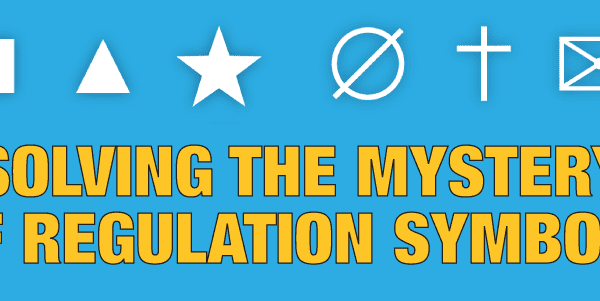Clarification provided by OSHA’s Inspection Procedure, Directive CPL 02-02-079 in July 2015, is filtering through the regulated community and causing some concern.
The directive essentially confirms that HazCom 2012 labeling applies to “… a tank truck, rail car or similar vehicle…” comprising the container for a hazardous chemical when it is not immediately unloaded at the destination.
Hazard Communication is Key
The intent is presumably to ensure that workers potentially exposed to hazardous chemicals will be able to identify the risks, particularly if they are not familiar with DOT markings – or if the substance is a hazardous chemical under OSHA, despite not being a hazardous material under DOT.
The wording of 29 CFR1910.1200(c) is light on definitions of “container” (“…storage tank or the like that contains a hazardous chemical…”); and “shipped container” in (f)(1) et al is not actually defined in the regulation itself.
However, “Shipped Container” is defined in part X.C.21 of the CPL directive, i.e. “… means any container leaving the workplace, whether through normal shipping routes or physically handed to another person.”
Consequently OSHA expects that rail or highway tankers as “shipped containers” will, in addition to 49 CFR – required safety marks, include the HazCom 2012 “… labeling information … either posted on the outside of the vehicle or attached to the accompanying shipping papers …”
Sending a copy separately from the vehicle is not allowed.
Rollin’, Rollin’, Rollin’
As long as the tanker is moving or being unloaded without storage, then the CPL directive considers DOT labeling requirements sufficient.
However, if the wheels are chocked and the cab/engine is disconnected before offloading, the tanker is considered “stored” and must have at least the equivalent of stationary process container labeling under 29 CFR1900.1200(f)(7).
As with the various versions of the title “Rollin, Rollin, Rollin” recorded (since the 1959 Frankie Laine rendition of Timken’s original for the “Rawhide” TV series, resurrected by the “Blues Brothers” in the ’80s; and repurposed by Joel Plunkett & Limp Bizkit for different lyrics in this century), the interpretation of tankers as OSHA Hazcom containers is not new.
For example, in an interpretive letter from the 1985 Hazcom era, OSHA indicated:
” … In your letter you indicated that your greatest concern is that OSHA has recently taken the position that tank trucks and tank cars are containers. Tank cars and rail cars have always been considered to be included under the definition of a container. In the Summary and Explanation of the Standard it is stated that a container is “anything that holds hazardous chemicals except pipes and piping systems” (48 FR 228, p. 53335) … “
Theoretically hopper cars or bulk trailers of solid materials fit the same scenarios.
The subject was also included in a previous ICC Blog »
NOTE: For those readers interested in the Canadian WHMIS 2015 requirement, Section 5.5 of the HPR (Hazardous Products Regulations) essentially exempts suppliers from the need to provide supplier WHMIS labels for “bulk shipments”. Bulk shipments include “… without intermediate containment … or packaging … a … road vehicle, railway vehicle … hold of a ship …”. Employer responsibilities are covered by workplace labeling regulations under the authority of local jurisdictions.





